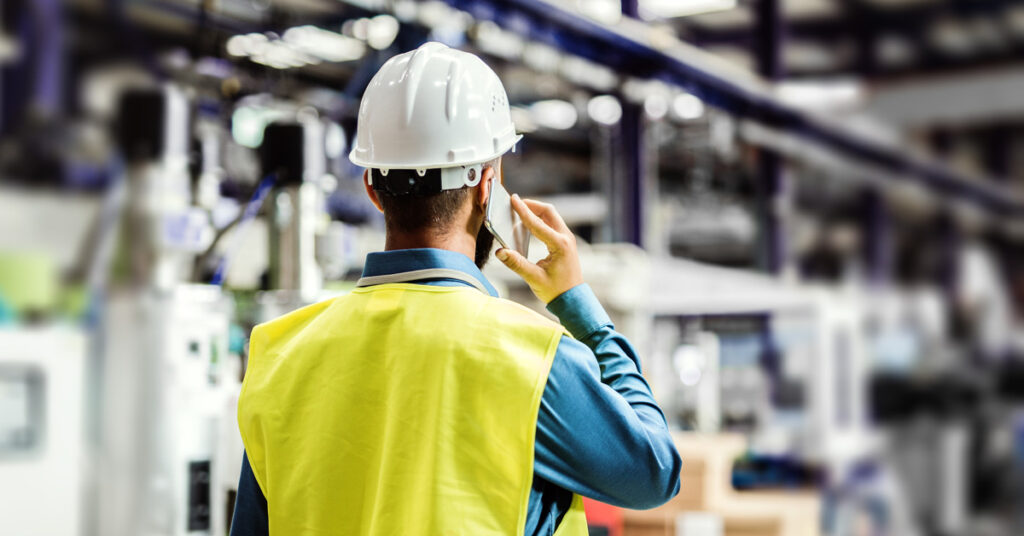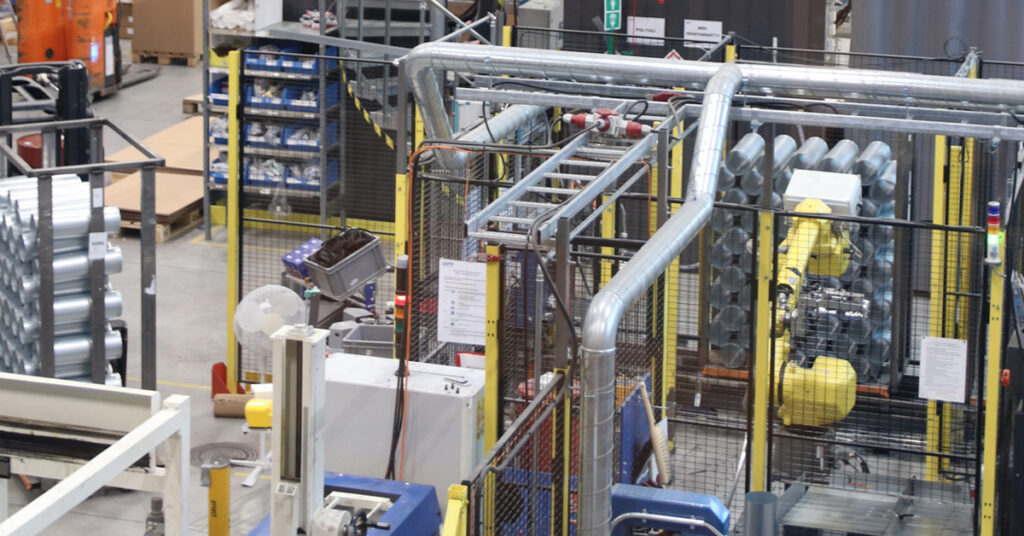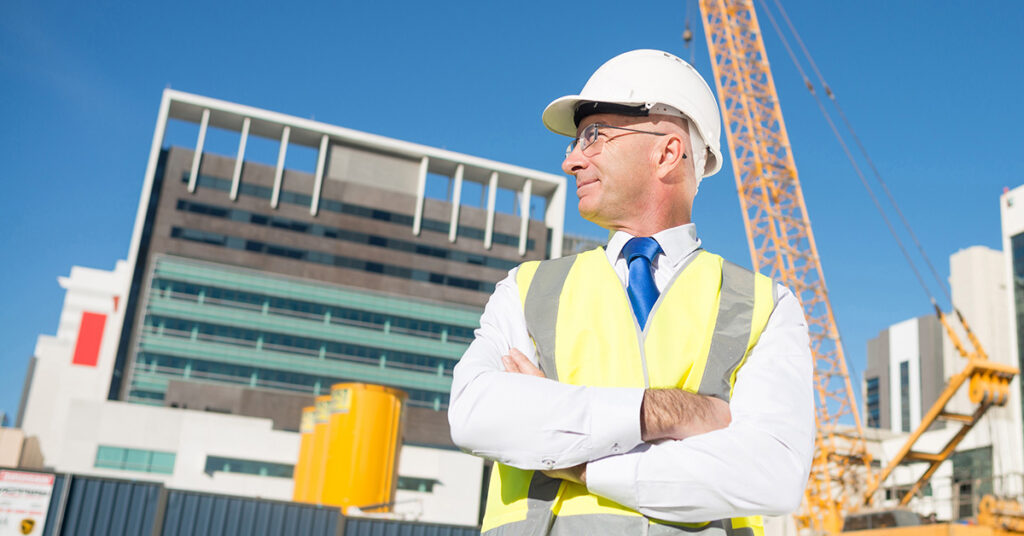VILPE Sense in Industrial Halls – Smart Remote Monitoring Improves Operations and Saves Costs

In factories and industrial halls, unplanned production downtime or shutdowns are among the most expensive operational risks. Incidents near production lines, electrical systems, or storage areas can lead to halted operations and significant financial losses. Remote monitoring devices and structural remote monitoring systems help prevent issues such as leaks and humidity damage before they escalate.
Studies show that production downtime can cause damage worth hundreds of thousands in factories.
- Average cost of downtime: USD 260,000 per hour (approx. €240,000) (Sumitomo Drive, 2025; ServiceMax / Aberdeen Research, 2023)
- High-production sectors (e.g., automotive): Downtime costs can exceed USD 2 million per hour (CTC Technologies, 2024)
- Smaller manufacturers: Report hourly losses of €10,000–50,000 due to production and labor costs.
Challenges of Traditional Roof Maintenance
Factory roofs protect production areas that often house equipment worth millions of euros. The challenge, however, is that people usually notice roof leaks only after water has already entered the building. Even with regular inspections, minor damage may be too subtle to notice, so they often escape detection.
Another issue is the long intervals between traditional roof inspections. For example, if inspectors check the roof in spring and fall, several months pass between inspections. During this time, even a small defect can escalate into severe humidity-related damage that is costly and complex to repair.
A third challenge is the sheer size of factory roofs. Inspecting such large surfaces can take hours. If the factory roof has solar panels, identifying leaks beneath them becomes even more difficult for maintenance personnel.
Example: How a Factory Utilizes Remote Monitoring

Modern roof with remote monitoring devices, such as VILPE Sense, make daily operations easier. One example comes from the Finnish company Parkanon Listatehdas Oy, which uses remote monitoring to protect its facilities.
“A smart roof that helps with humidity control is a great invention. It would save many from unpleasant damage because the issue would be detected in time. The monitoring of large industrial roofs tends to receive too little attention,” says Anne Talonen-Levula, one of the owners of Parkanon Listatehdas Oy.
“When you have flat roof buildings and large surfaces, you start to wonder how well, for example, roof drains actually work—especially if rainfall increases significantly in the future,” she adds.
The Parkanon Listatehdas site consists of five buildings with both pitched and low-slope roofs. VILPE Sense remote monitoring devices were installed on the roof of a factory hall built in 1972, covering 3,982 square meters. The roofing material is bitumen membrane, partially renewed in the 1990s. In 2020, 2,400 square meters of surface coating were replaced. The roof already had drains, underpressure air vents, and production exhaust fans.
The team installed VILPE Sense monitoring system on the section to track humidity levels in the structure and insulation layer.
“The industrial hall structures are old, so it’s interesting to see what the humidity level is like and whether it fluctuates a lot,” says Tommi Kujala, CEO of Parkanon Listatehdas.
The factory received its VILPE Sense system as part of a competition organized by VILPE and Kerabit Pro.
Read more: VILPE Sense ventilates the structures of Parkanon Listatehdas as needed
The Solution: How VILPE Sense Works in Industrial Halls

For industrial facilities, VILPE Sense provides remote monitoring for leak detection, humidity control, or a combined solution. In the combined setup, leak detectors monitor one part of the roof while the humidity control system ventilates another section—ideal for areas prone to recurring leaks.
The VILPE Sense leak detector is a remote monitoring device which identifies the location of leaks, allowing for quick repairs. The system consists of sensors installed in the insulation layer. The sensors collect data which is processed into a cloud-based humidity map. This map pinpoints affected zones, making maintenance more efficient.
On the Parkanon Listatehdas roof, VILPE Sense humidity control optimizes roof ventilation. The system detects elevated humidity levels within the structures. Wireless sensors measure humidity inside the structure and send data to a control unit, which automatically adjusts the roof fan. The roof fan increases airflow to remove excess moisture and returns to normal once conditions stabilize. After setting alert thresholds, facility managers receive notifications about potential leaks or humidity issues. This ensures timely intervention.
Results: Tangible Benefits

VILPE Sense remote monitoring devices delivers measurable advantages for factory owners and facility maintenance teams:
- Predictive maintenance: Detect leaks early and act before damage escalates. When sensors register rising humidity in the roof structure, maintenance can address hidden issues or minor leaks promptly and prevent costly repairs.
- Production continuity: Roof leaks or humidity damage no longer cause unexpected shutdowns. VILPE Sense safeguards critical machinery and production lines, ensuring uninterrupted operations.
- Cost savings: Early detection reduces repair costs and minimizes maintenance visits. Fixing a small leak is faster, easier, and far less expensive than repairing major damage. This saves both time and money.
- Remote monitoring: Access real-time data without climbing onto the roof. VILPE Sense monitors conditions 24/7, and maintenance teams can view data via a phone or computer interface.
- Compatibility: VILPE Sense can be integrated with existing building management systems.
Remote Monitoring Devices as the New Industry Standard

Roof remote monitoring and data-driven maintenance represent a smarter, more proactive way to manage industrial hall conditions. Remote monitoring ensures that roof repairs are carried out proactively, not after water has already entered the interior. The maintenance team can base roof repairs and inspections on objective data—not guesswork.
Remote monitoring devices are not an unnecessary extra for facility management – they are essential for maintaining predictable production and competitive operations. With VILPE Sense monitoring roof structures, factories can avoid unexpected downtime and keep their promises to customers.
Do you want to ensure your production never stops because of a roof leak or humidity damage? Contact our experts!
FAQ: Frequently Asked Questions
How does VILPE Sense differ from a traditional roof inspection?
Traditionally, an inspector checks the roof condition at most twice a year or only when there’s reason to suspect an issue. A roof inspection requires a technician or property owner to climb onto the roof. This process can take hours. Maintenance teams detect problems only once the damage becomes visible, while hidden humidity issues remain unnoticed. On the other hand, VILPE Sense continuously monitors the roof condition. Owners can easily access real-time data via phone or computer. With VILPE Sense, the maintenance team detects possible leaks quickly, and humidity doesn’t have months to accumulate in the structure.
How long does VILPE Sense operate without maintenance?
After installation, VILPE Sense requires no special maintenance and remains functional for decades. Sensors have a lifespan of 10–15 years, operating until their battery runs out. When the battery depletes, the sensor is replaced as the battery cannot be changed separately.
How does VILPE Sense support maintenance and predictive servicing?
VILPE Sense remote monitoring devices provide objective, measurable data about roof conditions, such as humidity levels. Remote monitoring enables fast response to emerging issues, preventing them from escalating into costly repairs and supporting predictive maintenance strategies.
Does VILPE Sense require separate software installations?
No. VILPE Sense uses a cloud-based platform accessible at sense.vilpe.com, you don’t need to install additional software.
Can the VILPE Sense system be integrated into Building Management Systems (BMS)?
Yes. VILPE Sense offers an open data transfer interface (REST API), allowing integration with modern Building Management Systems.
